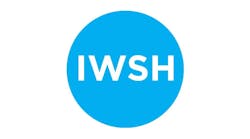Latest from Codes
Sponsored
ANN ARBOR, MI – Newly published changes to NSF/ANSI/CAN 61, the drinking water product standard required in the United States and Canada, further restrict the amount of lead that can leach from plumbing products, NSF International announced today.
The significantly more rigorous requirements were approved after nearly three years of exploring various testing methods to reduce lead leaching from endpoint devices that dispense drinking water, as well as from other plumbing components.
“Aggressive lead-monitoring programs are being carried out in schools, day care centers and communities in an ongoing public health protection effort. As facilitator of the standards that became the foundation of the U.S. Safe Drinking Water Act, NSF International is pleased to have been a part of this important update to reduce lead from our drinking water,” said Jessica Evans, Director of Standards Development at NSF International, a global public health organization and standards developer.
The more stringent pass/fail criteria for certification to the standard will require the maximum amount of lead leaching to be reduced from 5 micrograms (µg) to 1 µg for plumbing endpoint devices that dispense drinking water such as faucets, and from 3 µg to 0.5 µg for other plumbing components such as connector hoses and small shut-off valves. In-line mechanical devices and other product categories under NSF/ANSI/CAN 61 are not subject to the new requirements.
NSF International facilitates the Joint Committee on Drinking Water Additives – System Components that oversees and approves changes to NSF/ANSI/CAN 61: Drinking Water System Components – Health Effects and that began investigating lower lead options in 2017. Revisions to the standard were approved by the Council of Public Health Consultants and ratified by the American National Standards Institute (ANSI) and the Standards Council of Canada (SCC), according to their standards development processes. The joint committee is comprised of balanced representation from the regulatory/public health, manufacturing and consumer sectors.
“These new lower requirements for lead leaching into drinking water are important changes that add extra levels of protection for families. The joint committee and a special task group dedicated nearly three years to extensive review and investigation of several options and test methods to establish these more rigorous limits,” said France Lemieux, Chair of the Joint Committee on Drinking Water Additives – System Components, and Head of the Materials and Treatment Section, Water and Air Quality Bureau, Health Canada.
The U.S. Environmental Protection Agency, the U.S. Centers for Disease Control and Prevention and Health Canada have determined that no level of lead is considered safe, and the American Academy of Pediatrics has called for regulations limiting exposure of lead in drinking water for schools and day care centers to no more than 1 ug/L.
Under the new standard requirements, certification of applicable products to the more stringent lead leaching criteria is optional for the next three years to allow manufacturers time to comply. On Jan. 1, 2024, all products will be required to meet the stricter requirements.
Products certified to the standard’s new criteria will be required to indicate compliance on their product literature and/or packaging to enable schools and consumers to easily identify products with the reduced lead leaching limits.
NSF/ANSI/CAN 61 also covers other contaminants in drinking water.


